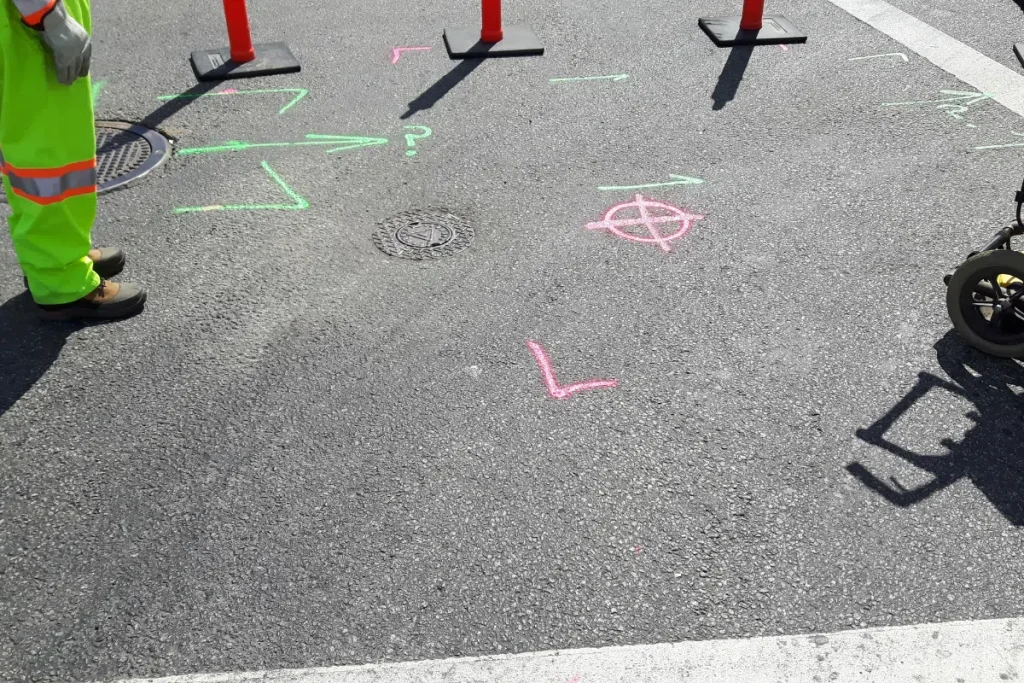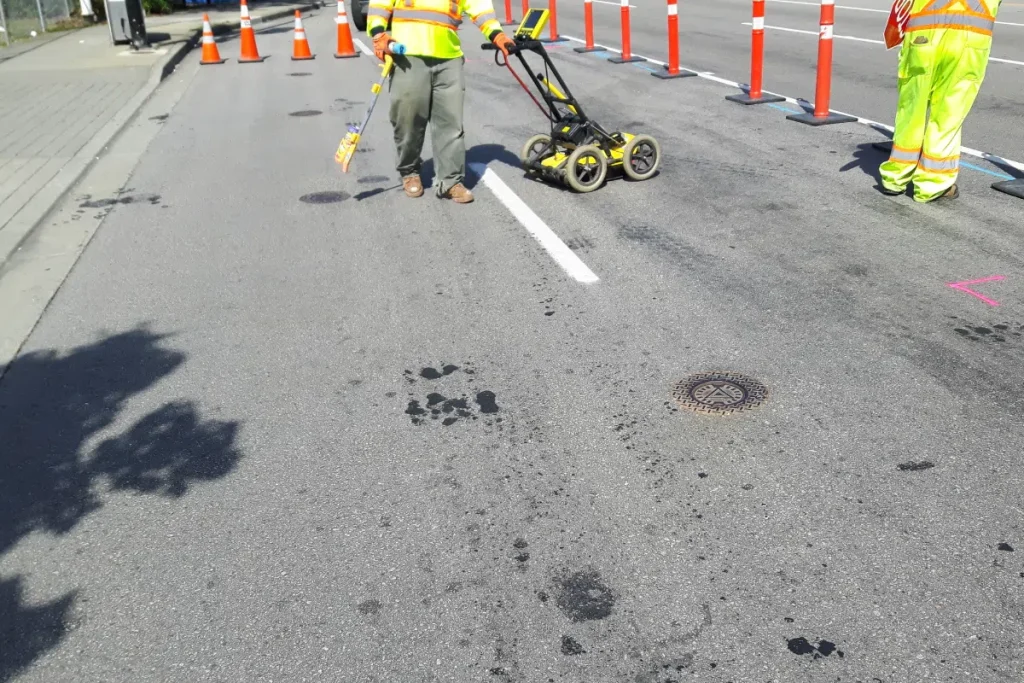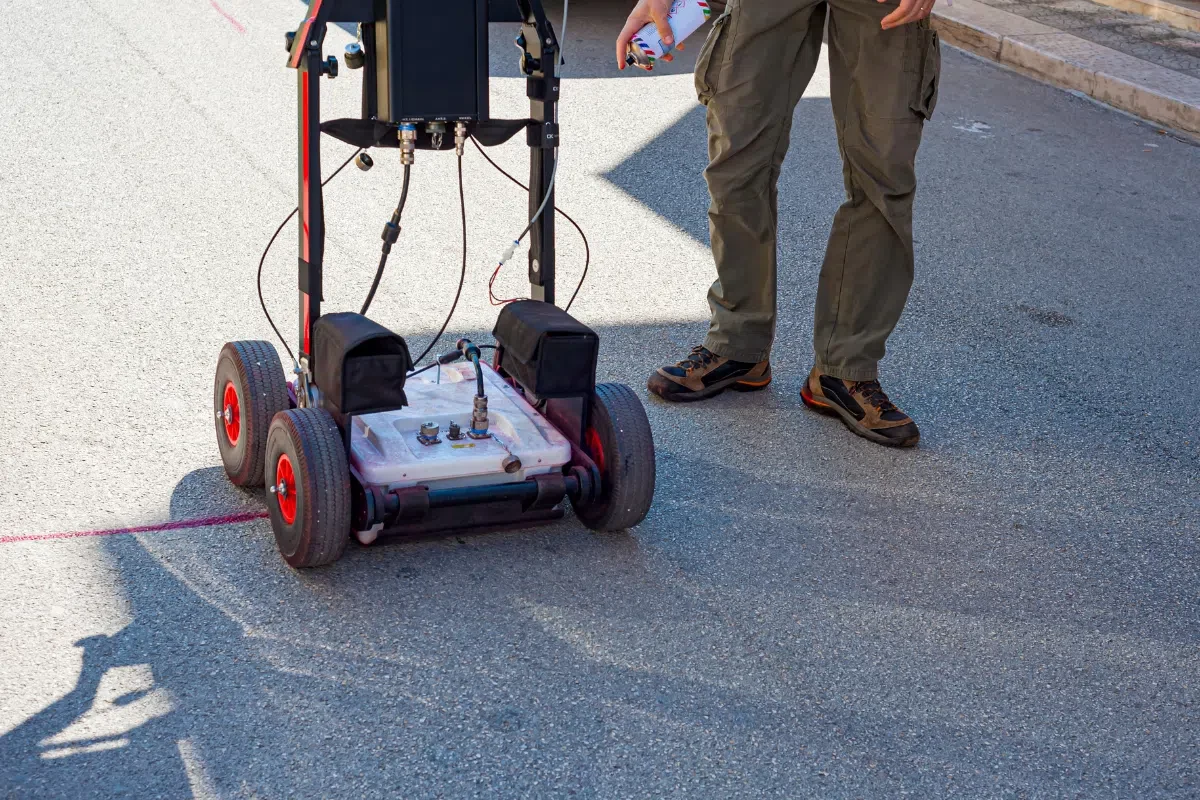Before any construction or ground-disturbing activity takes place, one crucial question always arises: what lies beneath the surface? Hitting buried utilities isn’t just costly — it can be dangerous. That’s where GPR utility scanning steps in as a modern, non-invasive solution to map what’s hidden underground. But what exactly is GPR and how does it work?
Why is locating underground utilities important?
Every construction site sits on a layer of unknowns. Beneath roads, lawns, and concrete slabs are water lines, electrical conduits, gas pipes, communication cables, and even old infrastructure that’s undocumented. Striking any of these during excavation can lead to safety hazards, expensive delays, and legal liabilities. GPR utility scanning helps avoid those risks by giving professionals a detailed look below the ground before they dig.
How does ground penetrating radar technology work?
Ground Penetrating Radar operates by emitting high-frequency radio waves into the ground using a small antenna. As these waves travel downwards, they react differently when they encounter buried objects or changes in material. Some of the energy bounces back to the surface and is picked up by a receiver. The scanner then converts these signals into a visual readout called a radargram. Skilled technicians interpret these patterns to identify materials, estimate depth, and mark the precise location of underground utilities in real time.
What types of materials can GPR detect underground?
One of the biggest advantages of GPR is its ability to detect both metallic and non-metallic objects. Unlike traditional electromagnetic locating equipment — which primarily finds conductive utilities like metal pipes — GPR can also spot plastic water lines, concrete structures, PVC conduits, voids, tanks, rebar, and even buried debris. This makes it a versatile tool across construction, plumbing, infrastructure, and environmental industries in Florida where utility networks are often complex and aging.
How accurate is GPR in determining depth and position?
When performed by trained professionals, GPR can typically locate utilities with depth accuracy within 10-15%, but the precision depends on several factors. Soil composition, moisture levels, material type, and the frequency of radar waves all impact the clarity of results. Sandy Florida soils, often favorable for radar penetration, usually provide good depth estimates. Denser clays or wet mud can scatter the radar signals, making readings more challenging and requiring expert interpretation.
Is GPR safe to use during residential and commercial projects?
Yes, GPR is considered very safe. Since it uses low-powered radio waves, the technology poses no known health risks to operators or bystanders. It is a non-destructive method, meaning nothing is drilled, punctured, or broken during the scanning process. This makes it ideal for use around homes, schools, office complexes, hospitals, and public areas where safety and minimal disruption are key.
Can GPR scanning be done through concrete and asphalt?
Absolutely — that’s one of the reasons GPR has become popular across Florida construction sites. Technicians can scan through existing concrete slabs, driveways, sidewalks, and asphalt pavements without having to demolish anything first. This is especially useful for renovation projects where older buildings might not have updated utility as-built plans on file.
What is the process of a GPR utility scan on a construction site?

GPR scanning begins with a technician surveying the site on foot, pushing or pulling a radar scanning cart over the ground in an organized grid pattern. As the antenna travels, real-time data is collected and processed. Suspicious reflections are marked directly on the surface using paint or flags. These markings act as visual guides for excavation crews to avoid. In some cases, the scan data is also compiled into a digital report for engineers, plumbers, or project managers to review.
What are the limitations of ground penetrating radar?
While GPR is a powerful technology, it does have limitations. It struggles in highly conductive or saturated soils, where signal penetration is reduced. Crowded underground environments — common in older Florida districts — can generate overlapping reflections that require experienced technicians to interpret accurately. Additionally, GPR cannot independently identify the exact type of utility; it detects anomalies which must then be verified with utility plans or additional locating methods.
Why are Florida contractors increasingly using GPR utility scanning?

Florida’s rapid development, aging infrastructure, and hurricane-related rebuilds have made accurate utility locating more important than ever. Contractors in cities like Tampa, Orlando, Jacksonville, and Miami face tight project timelines and heavily regulated dig safety requirements. By using GPR utility scanning before excavation, they can confidently reduce risk, avoid costly repairs, and protect workers and nearby residents.
How do plumbers benefit from GPR scanning services?
Plumbers often need to locate hidden water mains, sewer lines, and drainpipes before installing new systems or performing repairs. GPR helps them quickly trace non-metallic PVC lines or old terracotta sewer pipes that wouldn’t show up on metal detectors. This ensures faster diagnoses, more precise cutting or digging, and less disruption to landscaping or flooring — offering a smoother workflow and satisfied customers.
What should you look for when hiring a GPR utility scan provider in Florida??
Always verify the company’s experience, equipment quality, training credentials, and safety procedures. Ask whether they deliver depth estimates, digital reports, and site markings. Ensure they are familiar with Florida’s soil types and utility infrastructure. A reliable provider will clearly communicate what GPR can and cannot do so you can make informed decisions
GPR utility scanning is an essential pre-construction and renovation tool across Florida’s evolving landscape. By using high-frequency radar waves to ‘see’ below the surface, it helps contractors, engineers, and plumbers avoid accidental hits, plan smarter, and protect both budgets and lives. Whether digging trenches, installing pipes, or breaking up old slabs, investing in a detailed GPR scan allows for safer work and fewer surprises. Ultimately, incorporating this technology into your next project can save significant time, money, and stress — especially in a complex underground environment like Florida’s, where AM Florida Builders understands the value of getting it right from the start.



